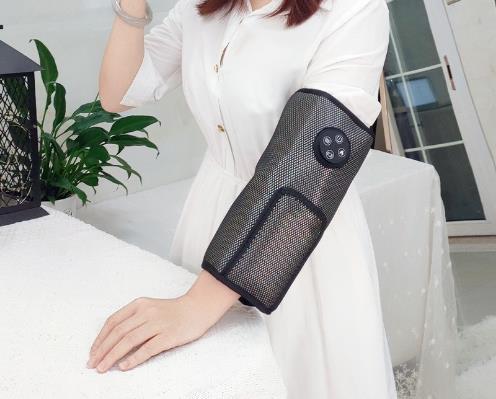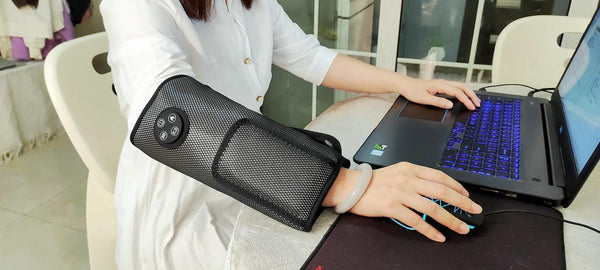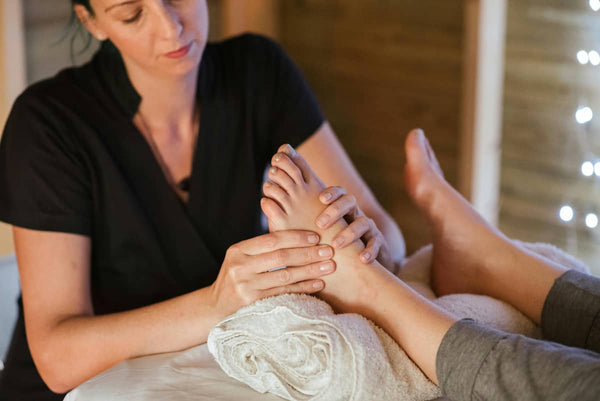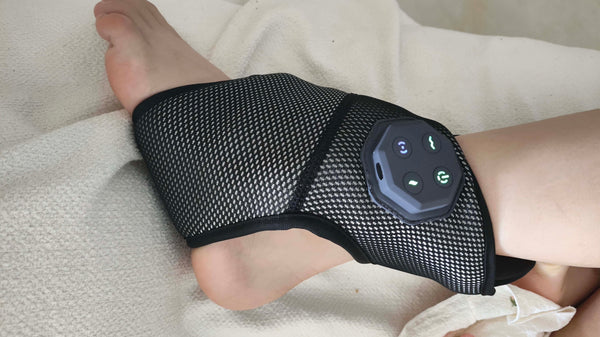 If you work in a CBD office, you know the feeling. The clock hits 4 PM, and that familiar, dull ache in your lower back starts to make itself known. After hours spent sitting at a desk, your back is crying out for relief. But when you look for a solution, the options can be overwhelming. Do you need a high-tech gadget, a simple manual tool, or a professional therapist? Finding the best back massager isn't just about picking one—it's about understanding which type of massage is right for you.
If you work in a CBD office, you know the feeling. The clock hits 4 PM, and that familiar, dull ache in your lower back starts to make itself known. After hours spent sitting at a desk, your back is crying out for relief. But when you look for a solution, the options can be overwhelming. Do you need a high-tech gadget, a simple manual tool, or a professional therapist? Finding the best back massager isn't just about picking one—it's about understanding which type of massage is right for you.
The debate often boils down to two main camps: those who swear by multi-functional electric massagers for broad relief, and those who prefer targeted manual therapy for pinpoint accuracy. So, which approach truly delivers the best massage for lower back pain? This guide will give both sides a fair crack, helping you figure out the best way to get your back sorted.
The High-Tech Option: Multi-Function Massagers
In recent years, at-home massage technology has come a long way. Modern devices aim to replicate a therapeutic experience by combining several functions into one unit. They are designed for convenience and for treating large muscle groups, like the entire lower back and glutes, which is an area where office workers hold a lot of tension. This approach is all about comprehensive, easy-to-access relief.
A frequent topic in any Klcosy back massager review is its multi-functionality. Devices like these often include a range of technologies: Heat Therapy to warm and relax muscles, Red Light Therapy to soothe deep discomfort, and a combination of massage styles. This is where the air compression vs vibration massager debate comes in; vibration offers a stimulating, deep buzz, while air compression provides a rhythmic, kneading squeeze. Having both in one device allows you to tailor the session to your specific needs.
The key benefit here is the ability to lie back and let the machine do the work. It’s an excellent way to unwind after a long day and manage the widespread muscular fatigue that is really, really common with a sedentary job. It’s perfect for general soreness and maintaining muscle health between professional treatments.
The Manual Method: Trigger Point Therapy
On the other side of the coin is manual therapy, specifically trigger point therapy for back pain. This technique isn't about broad strokes; it's a precision strike. A trigger point is essentially a small, hyper-irritable knot in your muscle tissue that can cause pain both at the site and in other areas of the body. This therapy focuses on applying deep, sustained pressure directly to these knots to force them to release.
This is where simple tools come into their own. While a therapist uses their thumbs or elbows, you can achieve a similar effect at home. A classic example is using a tennis ball massage for back pain. By placing a ball between your back and a wall or the floor, you can use your body weight to apply targeted pressure to a specific sore spot, holding it until you feel the muscle start to relax.
The advantage of this method is control and precision. You can hunt down the exact source of your pain and apply exactly the right amount of pressure needed to relieve it. It’s an incredibly effective—and affordable—way to deal with specific, stubborn knots that a larger massager might not isolate as effectively.
At-Home vs. Pro Care: Which is Best for You?
So, we have two excellent but very different approaches. The multi-functional electric massager offers broad, soothing relief with advanced technologies, ideal for general stiffness and relaxation. The manual trigger point method offers precise, user-controlled relief for specific, deep knots. Neither one is universally "better"; they simply serve different purposes.
Think of it like this: an electric massager is like a comforting soak in a warm bath, soothing your entire body after a stressful day. Manual trigger point therapy is like having a specialist perform a targeted procedure to fix one specific problem area. Many people find that the most effective long-term strategy involves using both.
You might use a device like a Klcosy massager for daily 15-minute sessions to manage overall back tension and improve circulation. Then, if you feel a particularly stubborn knot developing, you can use a tennis ball for a few minutes of targeted trigger point work. This blended approach gives you the best of both worlds: daily maintenance and an emergency tool for acute spots.
Ultimately, the best back massager is the one that addresses your specific type of pain and that you'll use consistently. By understanding the difference between broad relaxation and targeted relief, you can build a personalised pain-management toolkit that keeps your back feeling strong and pain-free, even after a long week in the office.
Frequently Asked Questions
Can the Klcosy massager replace professional therapy for chronic back pain?
A multi-functional device like the Klcosy massager is an excellent tool for managing the symptoms of chronic back pain, such as muscle stiffness and soreness. However, it should not be seen as a replacement for professional therapy. A physiotherapist or remedial massage therapist can diagnose the underlying cause of your chronic pain and provide a comprehensive treatment plan. The massager is best used as a complementary tool to maintain results and manage pain between professional appointments.
How does trigger point therapy specifically alleviate lower back pain?
Trigger points in muscles like the gluteus medius and quadratus lumborum are common culprits for referring pain to the lower back. Trigger point therapy for back pain works by applying sustained pressure to these knots. This pressure temporarily restricts blood flow, and when it's released, fresh, oxygenated blood rushes into the area. This process helps to flush out metabolic waste, release the muscle contraction, and deactivate the pain-referral pattern, providing targeted relief.
Is heat or vibration more effective for muscle tension in the lower back?
Both are effective, but they work differently. Heat is generally more effective for overall muscle relaxation and stiffness; it warms the tissues, increases blood flow, and makes them more pliable. Vibration is typically more effective for breaking up deeper adhesions and stimulating the nerves to interrupt pain signals. For general muscle tension, starting with heat to warm up the area, followed by vibration to work on the knots, is often the most effective combination—which is why many modern massagers include both.
This reply is generated based on currently verifiable public information. It is recommended to cross-check key content with authoritative sources.




0 comments